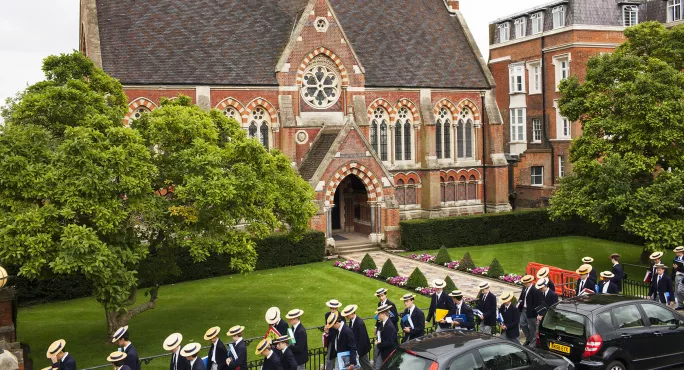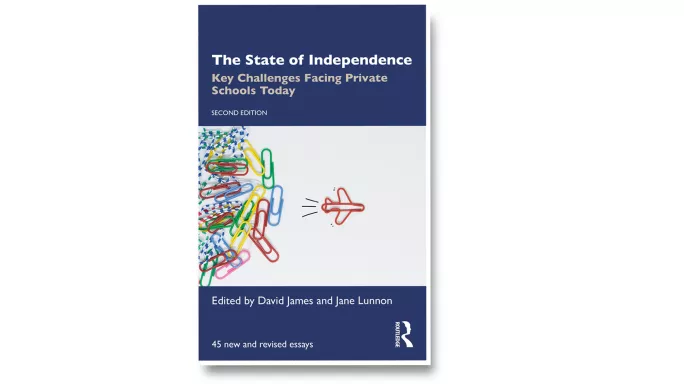- Home
- Analysis
- Specialist Sector
- 5 ways private schools could become more accessible
5 ways private schools could become more accessible

It is not a novel observation, nor does it require a degree in economics to point out, that fees for independent schools have consistently risen above inflation, and that has, by definition, made them less accessible.
Polling that Public First (my company) has carried out for the Independent Schools Council shows that accessibility - and specifically financial accessibility - is consistently the most popular answer given when voters are asked what benefits they would like to see independent schools give.
But outside models of bursaries, or fee discounts, I want to pose here five more unorthodox ways independent schools could become more accessible. It is worth saying upfront that such options may only be open to larger schools, or school groups.
And many of the precise elements of these proposals would require refinement, or would be implausible. But the purpose of writing them is to illustrate that discussions on accessibility can, and should, go further than discussions about financial assistance.
1. What if more schools created an entirely online subsidiary, at a lower cost?
Harrow School Online is an online-only, highly selective sixth form. It is run by Pearson, which has a platform for delivering online schools in the UK and abroad, partnering with external brands (such as Harrow).
Fees are £5,250 per term - still not “accessible” in a meaningful way, but considerably less than the termly £15,570 needed to attend Harrow School face to face.
The Harrow School Online partnership appears to be an online version of many schools’ international campuses, with the home institution providing a brand name and quality assurance of the output, in exchange for a fee.
But there are other models that could involve greater use of shared teachers from the home institution, or an even lower cost online option - the Pearson platform can be utilised for much lower cost schooling, or schools could use or build their own.
2. What if schools created a stripped-down version of their school, physically?
Coventry University College (CUC) is a higher education institution co-located in the centre of the city and run by Coventry University.
But while the main university offers the recognisable three-year residential offering, CUC offers lower cost, more vocationally based university offerings throughout the year. But what makes it different from any other further education institution, is that it is co-located with its sister institution and students share some - but not all - facilities, teaching staff and the like.
But because CUC is a stripped-down and targeted offering, its fees are lower - £6,000 or £7,000 a year as opposed to £9,250 at Coventry University.
Students literally choose whether they are willing to pay more for a full experience, or want to focus on teaching at a lower cost. Independent schools could offer the same co-located option.
3. What if schools moved locations within the UK?
Independent schools are clustered disproportionately in the broader South East, where average incomes are highest - but costs are highest, too.
There are, however, areas of the country where a school may be able to support itself under a lower-cost model because the cost of land, facilities, and potentially staff costs, are lower.
In particular, many smaller cities and larger suburban towns in the North and Midlands are gentrifying and have growing pupil populations.
In the past, independent schools have considered moving abroad (normally in response to crises). But some schools that cannot survive the market in one part of the UK may find a viable economic niche in another, and at a lower cost as well, broadening accessibility.
4. What if independent schools created specialist tracks at post-16?
A small number of independent schools have already sponsored state sixth forms.
There are also a small number of specialist institutions that focus on an area, in the state or independent sector - a handful of maths schools, or The BRIT school, or East London Arts and Music.
What if independent schools set up their own, likely post-16, institutions that offered a very targeted curriculum offering for those who wanted to specialise? We could have independent schools offering science specialism, humanities or technology.
These would be similar to government-funded specialist schools, but with the advantage of being able to charge fees - but where experience to date suggests that a fee income of perhaps £7,500-£10,000 per pupil is sufficient to run high-quality provision.
5. What if independent schools formed their own chains?
Some independent schools have a flourishing set of international campuses and have formed a shared back office and governance structure, with revenues often supporting bursaries. United Learning, the biggest multi-academy trust in England, also runs 13 independent schools.
But there are opportunities for more clustering of independent schools within the UK, either wholly as independent multi-academy trusts, or in true partnering with the state sector - which often has a stronger track record on cost control and financial efficiency than the independent sector.
Jonathan Simons is a partner and head of the education practice at Public First.
The above is an edited extract from The State of Independence, second edition, published by Routledge. Tes readers can receive 20 per cent off by using the code TES, valid until 31 March 2023

You need a Tes subscription to read this article
Subscribe now to read this article and get other subscriber-only content:
- Unlimited access to all Tes magazine content
- Exclusive subscriber-only stories
- Award-winning email newsletters
Already a subscriber? Log in
You need a subscription to read this article
Subscribe now to read this article and get other subscriber-only content, including:
- Unlimited access to all Tes magazine content
- Exclusive subscriber-only stories
- Award-winning email newsletters
topics in this article



